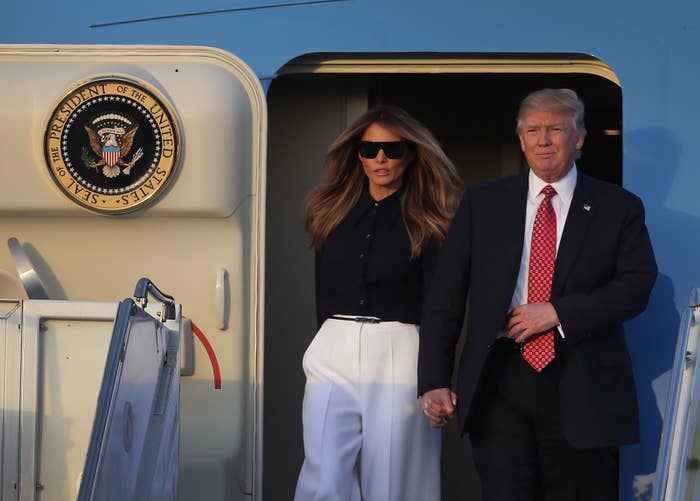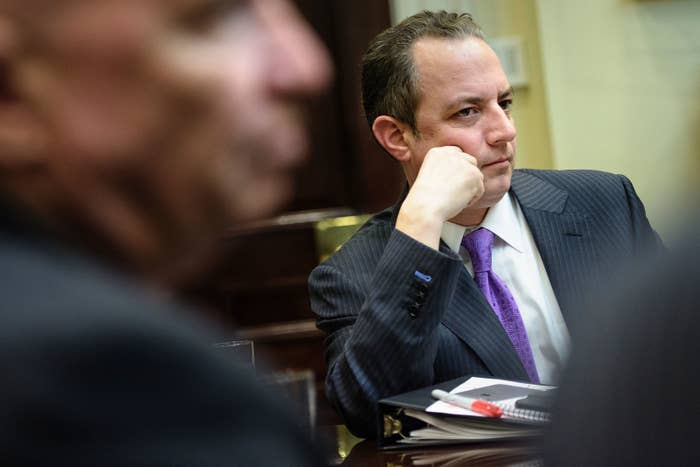
A flurry of developments and reports at the end of the day Friday left significant confusion as to what would happen next with President Trump's refugee and travel ban executive order.
The administration has a few different options to proceed legally, after the US Court of Appeals for the Ninth Circuit denied the Justice Department's request to put on hold the ruling that froze implementation of the travel and refugee bans.
But now, a move from a judge in the Ninth Circuit means that a bunch of additional judges there likely will be having a say on what happens next.
Here's what happened and how we got here.
On Thursday, the Ninth Circuit issued an order denying the Justice Department's request to stay the Feb. 3 trial court order halting enforcement of the ban. The focus throughout the day Friday was on whether the Trump administration would — and should — go to the Supreme Court seeking a stay (which would allow the ban to be implemented during the legal proceedings).
The problem there, though, is the 4-4 split on the Supreme Court. Inside the White House, there could be significant concern about whether a majority of the court — so at least five justices — would vote to grant a stay. Again, this would involve the issue of whether the ban could be enforced right now.

With that in mind, it made sense when multiple outlets reported Friday afternoon that the Trump administration would not be going to the Supreme Court now — instead continuing to fight out in lower courts the larger question of whether Trump's order is legal and constitutional. White House chief of staff Reince Priebus pushed back on those reports, though, saying that all options — including going to the Supreme Court now — remained on the table.
Among those options is the possibility — outside of courts — of issuing a new executive order. "We also have a lot of other options, including just filing a brand new order," Trump said on Friday afternoon.
But then something unexpected happened.
Before those questions could go much further, however, the Ninth Circuit took back the reins. A little before 3 p.m. PT, the court announced that one of the judges of the court requested the full court take a vote on whether to reconsider the three-judge panel's decision. While parties can request for an appellate court to reconsider a decision, a judge here called for a vote on the matter of his or her own volition, or "sua sponte."
The parties have been ordered to submit briefs on whether the larger court should reconsider the three-judge panel's decision by 11 a.m. PT on Thursday.
The Ninth Circuit — which covers nine western states — actually is made up of 25 judges, with another 19 judges in "senior status" on the court. However, voting to decide whether to take the case "en banc" only includes the 25 active judges.
Here, that means that two of the judges who were involved in the initial decision — Judges William Canby and Richard Clifton — will not have a vote on whether to rehear the matter, because both are senior judges.
Now, the fact that one judge called for a vote does not mean that a majority of the court is upset with the three-judge panel's decision or that they plan to review, let alone reverse, the decision. It simply means that one of the judges of the court called for an en banc vote.
If the court does vote to rehear the Justice Department's request for a stay en banc, that could lead to a whole new briefing schedule and possibly even oral argument before the Ninth Circuit. Additionally, the size of the Ninth Circuit leads to another wrinkle: The appeals court has what is called a "limited en banc" process, in which it hears en banc appeals with 11 judges. Those judges would include the chief judge of the circuit, Judge Sidney Thomas, as well as 10 judges selected at random. (Canby and Clifton — along with the 24 active judges besides Thomas — could be selected, per the rules.)
A Justice Department spokesperson, noting the Ninth Circuit's order, said only, "The Justice Department is considering its options. We have no further comment."
This isn't where things end, though, even for now.
There still remain three additional questions out there.
The administration could still seek a stay from the Supreme Court. That's unlikely, it would seem at this point, but, as Priebus said, it is an option. The Ninth Circuit's move does not take that option away from the administration, although it's hard to see why it would take that option now with more of the Ninth Circuit set to consider rehearing the request for a stay.
Secondly, the president could withdraw the current executive order; amend it; or issue a new order that supersedes, in whole or in part, the current one. Any such move obviously would cause complications for current litigation, although it would not necessarily render the lawsuits moot. In other words, even if the White House puts out a new executive order, there still might be lawsuits — old and new.
Finally, the trial judge — US District Judge James Robart — is still asking the parties what he should be doing and whether he should keep planning to move forward toward a hearing on a preliminary injunction. (This relates back to the question the Ninth Circuit considered at arguments about whether the temporary restraining order, which is generally not appealable, looks more like a preliminary injunction, which is appealable.) Since the appeals court decided the TRO was appealable — and set a further briefing schedule on the federal government's underlying appeal (before the en banc rehearing question was raised) — Robart, on Friday night, asked the parties to tell him by noon Pacific Time on Monday what he should do.
